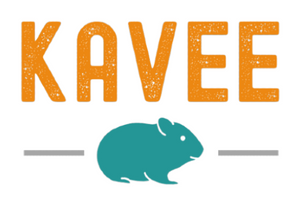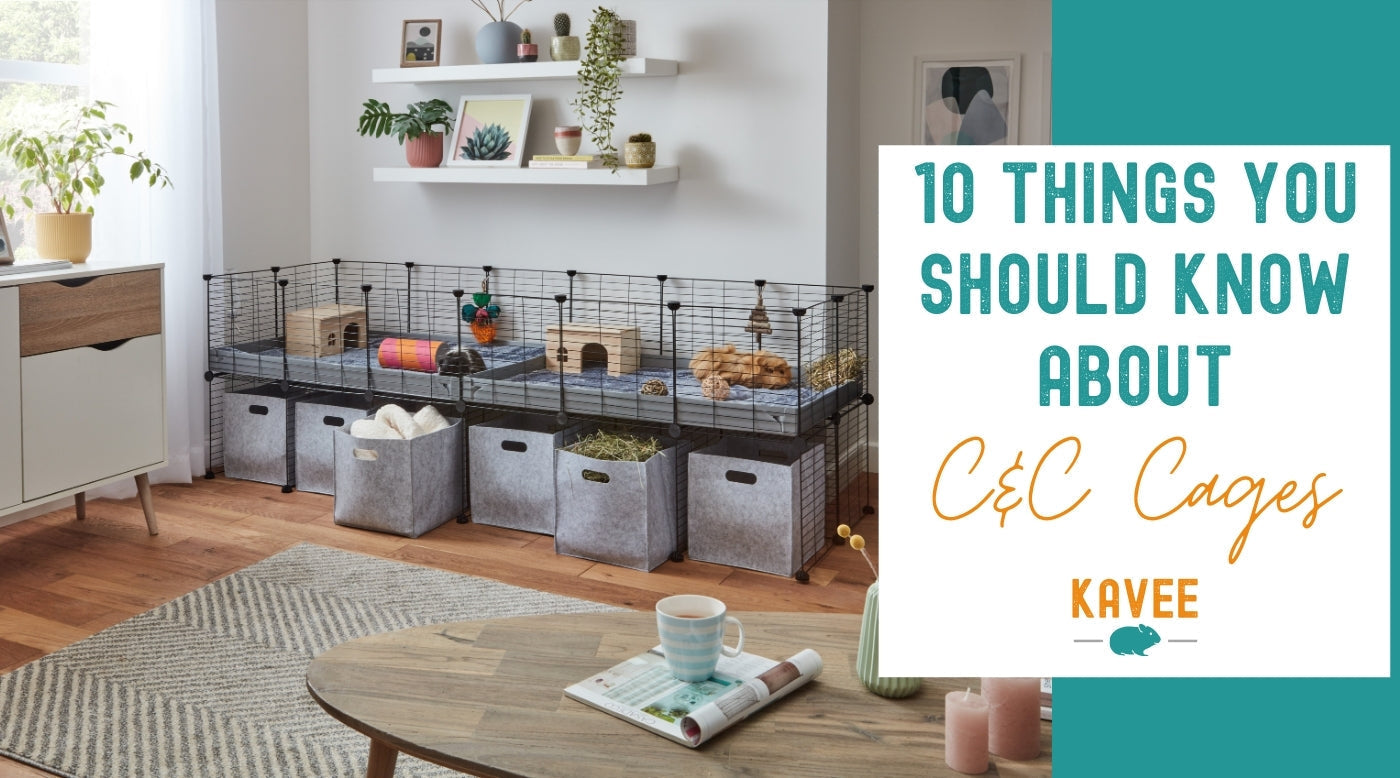Choosing a C&C cage is a big step for you and your piggies and is a great way to ensure your pets have lots of space to move about. This type of guinea pig cage is designed to simplify the lives of piggies and their parents, as it’s not only great for their well-being, it’s also easy to clean and set up.
Whether it’s your first time hearing about C and C cages or you wish to learn more before taking the plunge, here are the top 10 things you should know about them.
1. C&C cages are BIG
C&C cages for guinea pigs are surprisingly big, providing your small pets with plenty of room to roam. The smallest you can find is a 3x2 cage, designed to house one guinea pig but only when they’re poorly or need quarantining, as we always recommend guinea pigs live with other piggies. While a 4x2 or even a 5x2 makes a better indoor guinea pig cage for 2, ensuring that each has their own space.
If you have a little herd, a 6x2 is a suitable large guinea pig cage to house up to 4 guinea pigs. Make sure you plan ahead to figure out what size is best for you and your pets, and dedicate a space that works. We always suggest you get the biggest cage size possible to keep your piggies comfortable.
2. C&C cages have no grid flooring
You might be surprised to learn that these cages have no grids at the bottom. Coroplast is the golden standard for many C&C cages as it provides a sturdy base, preventing the development of bumblefoot in piggies (a foot infection caused by walking on uncomfortable flooring).
Plus, if you were to use grids at the bottom of the cage, it would create an uneven surface, and the coroplast sheet would not fit properly. The only case where grids are placed below the coroplast is for C&C cages with a stand, but even then, piggies’ feet are protected by coroplast to ensure they stay comfy.
3. Not all C&C grids are suitable for baby guinea pigs
There are many options to choose from when it comes to finding a C&C cage, and you should keep in mind that not all C&C parts are the same. This is particularly true for DIY materials, which were originally intended to build shelves and not cages. Do your research on which grids will work best for you and your piggies.
Square grid cages or guinea pig cages with grid holes smaller than 1 inch are not suitable for baby guinea pigs. The square grids would let piggies escape, while the smaller grids could get the baby piggies stuck. Kavee’s grids have thin meshing with small 2.5cm holes, also referred to as baby bars, which are suitable for piggies 8 weeks and older. Of course, it’s always best to run a test with your guinea pigs first when choosing any C&C grid, as they all come in different shapes and sizes.
4. Some C&C cage grids may be hard to put together
C&C cages for guinea pigs are renowned for how quickly and easily you can set them up, requiring no DIY skills or tools. However, sometimes getting the grid cubes together can be a little tricky. So here’s a tip for slotting grids into the connectors to build your C and C cage: don’t be afraid to use a little force, listen out for the ‘click’ sound that lets you know the grid is in, and try cable ties to further tighten any loose grids.
However, be sure to hold onto the outer bars of the grids when pushing them in, since holding onto the inner bars may result in damage. If you’re still confused, make sure you check out our YouTube channel for videos on how to build guinea pig cages, or reach out to our customer team if you still have any questions.
5. Coroplast is surprisingly thin
As we’ve described Coroplast as a sturdy solid base, it’s likely you might be expecting it to be way thicker than it actually is. But here’s the thing: Coroplast is graded on grammage instead of thickness, ensuring that it’s both sturdy and lightweight. The sheet size can vary, but we recommend a grammage of 650 as the sweet spot for all C&C cages for guinea pigs.
Coroplast is also waterproof, so it won’t get damaged with time due to moisture, and can easily be cleaned with a spray of a pet-safe cleaner. And when it’s time to extend your cage, you can easily grab another sheet and slot it next to your existing base.
6. Guinea pigs might bite their C&C cage
It’s not unusual for guinea pigs to chew on coroplast or bite the cage bars of C and C cages. This could be out of simple curiosity or more serious reasons that should be addressed, like boredom or illness.
Thankfully, the corrugated plastic of Coroplast bases isn’t toxic to guinea pigs, and so shouldn’t be the grids if they’ve been coated with non-toxic powder. At Kavee, we only use pet-safe materials with everything we build, so you can be sure that even the occasional biting won’t cause them harm.
But it’s important to discourage any persistent biting, not only because it will damage your cage, but also because continuous chewing can be a cause for concern. You can try preventing your guinea pig from biting on cages by adding nibble guards and providing them with enriching toys.
7. C&C Cages for Guinea Pigs with Stands are a Game Changer
Adding a stand to your C&C cage can bring a lot of benefits to you and your guinea pigs. Piggy parents will enjoy being able to clean their cavy cage without bending down, feeling closer to their piggies, and gaining access to more room for storage. You can then add storage boxes and pack them with all your guinea pigs' supplies, keeping them always within reach.
While elevating cages with a stand reduces anxiety in guinea pigs, making them feel safer as they’re on the same level as you. This is because, as prey animals, seeing anyone (even their fave hooman) approaching from above can spook them!
8. Modular grids let you modify your cage anytime
Want to change up your cage layout? No problem! With C&C cages, the opportunities are endless. Swap grids around, rebuild your cage in the corner, or stack grids to build upwards. C&C cages for guinea pigs allow you to easily change things up and expand to welcome a new pet. Or even store them away, as they quickly pack down!
When you choose a C&C set-up as your indoor guinea pig cage, you get an enclosure that can change and adapt to your needs. Because we know that guinea pigs are addictive, and you’re likely to bring more home!
9. C&C cages work with any guinea pig bedding option
C and C cages allow you to pick guinea pig bedding that works best for you and your pet, as the coroplast base can work with any options on the market. Whether you wish to fill their cage with wood shavings, paper bedding, or fleece liners, you can do so to your heart’s content.
We recommend fleece cage liners for guinea pigs, as this bedding is absorbent, reusable, and soft to the touch. Liners are the best match for C&C cages as they’re another long-term choice that will accompany your piggies for many years to come.
10. You can use C&C cages indoors and outdoors
Since the Coroplast base is waterproof, C&C cages for guinea pigs can be used both indoors and outdoors. While we wouldn’t recommend them for permanent housing outside, they’re great for outdoor playtime on a nice day. We suggest you add a lid to protect your piggies from potential predators and to supervise them at all times.
This is just another great example of the versatility of C and C guinea pig cages, which have been designed to adapt to your piggy’s every need.
Conclusion
It’s easy to see how C&C cages for guinea pigs have risen to popularity when they’re so flexible, easy to clean & set up, and spacious. Also, did you know that this type of guinea pig cage helps you unleash your creativity? This much space makes plenty of room to fill their cage with cosy hideys and fun accessories you can mix and match. Enjoy turning their cage into a beautiful pet palace (and don’t forget to share pics on our Insta, we want to see your creations!).









